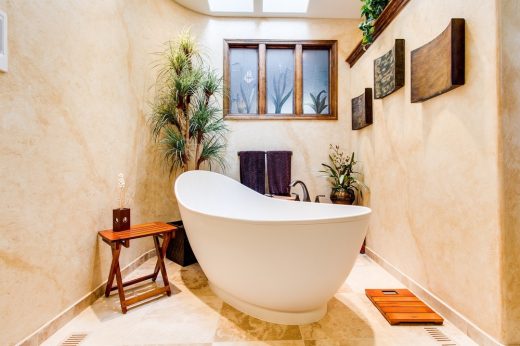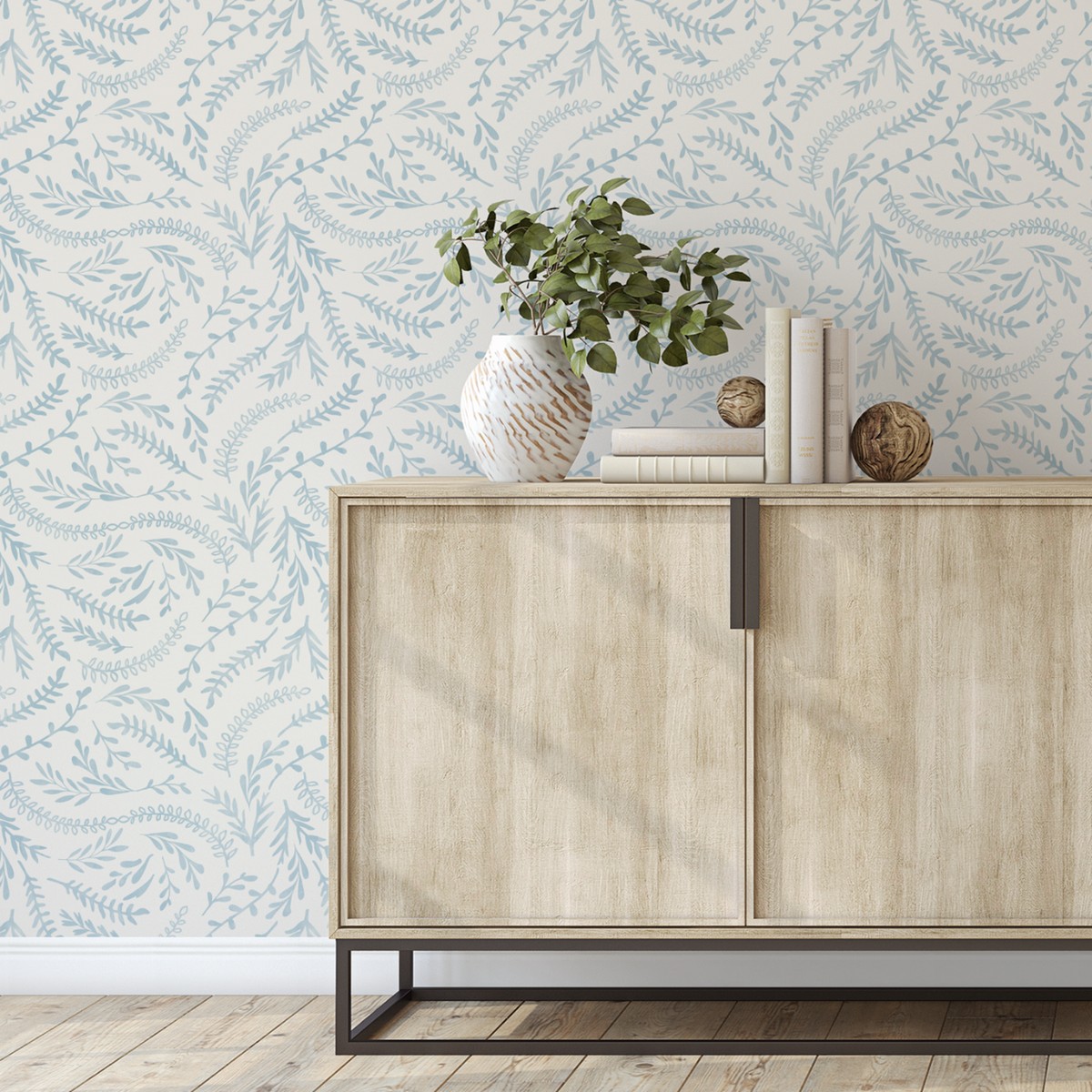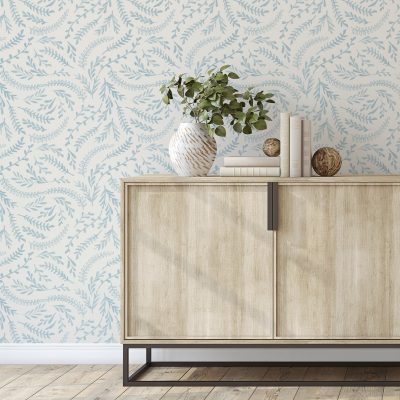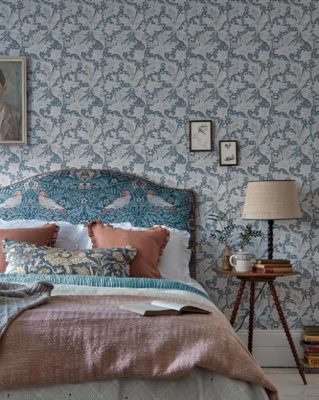Wallpaper interior design and architecture style guide, Home decoration style
Wallpaper Interior Design and Architecture
19 August 2024
How Wallpaper Enhances the Relationship Between Interior Design and Architecture
Wallpaper has become a powerful tool in bridging the gap between interior design and architecture. Both play crucial roles in shaping the aesthetics and functionality of spaces, but it is the strategic use of wallpaper that often brings these aspects together harmoniously. In this article, we’ll explore how wallpaper designs can elevate interiors, complement architectural elements, and create environments that are both visually captivating and functionally cohesive.
The Role of Wallpaper in Interior Design
Setting the Mood and Style of a Space
One of the key objectives of interior design is to establish the mood and style of a room, and wallpaper plays a significant role in achieving this. With countless patterns, colors, and textures available, wallpaper allows designers to express creativity and set the tone of a space. Whether your goal is to create a luxurious, cozy, or minimalist atmosphere, wallpaper for walls can effortlessly transform a room with minimal effort.
- Patterns and Themes: From floral and geometric prints to textured finishes and abstract art, wallpapers cater to a wide array of interior styles. Each design brings its own unique character, helping designers convey the desired ambiance.
- Color Influence: Wallpaper color schemes are vital in achieving a room’s visual balance. Warm tones can evoke a sense of comfort and intimacy, while cool colors create a calming, open atmosphere.
Enhancing Focal Points
Architectural features like arches, columns, or built-in niches often serve as focal points in a room. Using wallpaper strategically can enhance these elements, drawing attention to them without overwhelming the overall design. Whether it’s a striking mural behind a statement piece or a subtle textured wallpaper that complements the architecture, wallpaper plays a key role in guiding the eye and emphasizing specific areas.
Integrating Wallpaper with Architectural Elements
Complementing Structural Features
The architecture of a building provides the foundation, while interior design refines and enhances it. Wallpaper designs serve as the bridge between these two elements by either complementing or contrasting the architectural features.
- Symmetry and Proportion: Architects and designers aim to maintain balance within a space. Wallpaper can be chosen to align with architectural proportions, ensuring that walls, ceilings, and structural elements work in harmony.
- Highlighting Architectural Styles: Wallpaper can be tailored to match the style of the building. For example, classic damask prints may accentuate Victorian architecture, while sleek, minimalist patterns might suit modern or contemporary designs.
Defining Zones in Open-Plan Spaces
Modern architecture often embraces open-plan layouts that blur the boundaries between different functional areas. In such spaces, wallpaper can be used to subtly define zones without the need for physical dividers. A bold pattern might delineate a living area from a dining space, allowing the architecture to flow seamlessly while maintaining distinct visual identities for each area.
Wallpaper as a Tool for Architectural Illusion
Creating Depth and Dimension
Architectural designs are often limited by the dimensions and structural constraints of a building. However, wallpaper can overcome some of these limitations by creating the illusion of depth, space, or even structural complexity.
- 3D Effects and Trompe-l’œil: Wallpaper with three-dimensional effects can make a small room appear larger or add texture to a flat surface, tricking the eye into perceiving more depth.
- Mimicking Architectural Materials: Some wallpaper designs mimic materials like wood, stone, or brick. This not only saves on construction costs but also offers flexibility in achieving an architectural look that might be difficult or expensive to implement with real materials.
The Practical Benefits of Wallpaper in Architectural Design
Durability and Versatility
Wallpaper isn’t just about aesthetics; it’s also a practical solution that enhances the longevity and maintenance of architectural spaces. High-quality wallpapers are designed to be durable, resistant to wear, and easy to clean, making them suitable for both residential and commercial environments.
- Protective Layer: Wallpaper can protect walls from damage and staining, especially in high-traffic areas like hallways or reception rooms.
- Flexible Updates: As trends and tastes evolve, wallpaper offers a relatively simple and cost-effective way to update a room’s appearance. Unlike structural changes, which can be time-consuming and costly, swapping out wallpaper can quickly refresh a space.
Wallpaper interior design and architecture style Conclusion
Wallpaper is a crucial design element that beautifully integrates interior design with architecture. By offering versatility in style, texture, and color, wallpaper enhances both the aesthetic and functional qualities of a space. Whether you’re emphasizing architectural features, defining open spaces, or simply setting a room’s mood, wallpaper bridges the gap between design and structure, resulting in a cohesive and visually appealing environment.
For those looking to explore unique wallpaper designs or elevate their interiors, wallpaper serves as a versatile and impactful choice that aligns perfectly with both design goals and architectural principles.
Comments on this Complete Guide to Wallpaper interior design and architecture style article are welcome.
Wallpaper + Interior Design
Wallpaper and Interior Design Posts
Best peel and stick wallpapers for home

Beautiful Designs of Peel and Stick Wallpaper
Make your home beautiful with peel and stick wallpaper
Guide to buy nursery wallpaper for your home
Buildings
Residential Architecture
Comments / photos for the Wallpaper interior design and architecture style advice guide page welcome.







